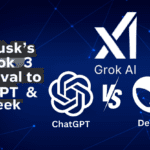Introduction
The mobile app development landscape is evolving at breakneck speed, driven by groundbreaking advancements in AI, 5G, and AR/VR technologies. As we approach 2025, choosing the right programming language has never been more critical—or more daunting—for developers aiming to dominate the industry. Whether you’re building native or cross-platform apps, selecting a future-proof language can make or break your project. In this blog post, we’ll unveil the top trending languages to learn for mobile application development in 2025, helping you unlock the potential of your next big project.
Why Choosing the Right Language Matters in 2025
The explosive adoption of emerging technologies like AI, 5G, and cloud computing is revolutionizing mobile app development. These advancements demand programming languages that are not only efficient but also scalable and versatile. For instance:
- AI-powered apps require languages with robust machine learning libraries.
- 5G-enabled apps need languages that can handle blazing-fast data processing.
- AR/VR applications demand languages with cutting-edge graphics rendering capabilities.
Choosing the right language ensures your app is future-proof, scalable, and capable of harnessing the latest technological innovations. If you’re curious about how AI is transforming app development, check out our article on The Role of AI in Modern Mobile App Development.
Top Trending Languages for Mobile App Development in 2025
Swift – The Undisputed Champion for iOS Apps
Swift has solidified its position as the go-to language for iOS app development, thanks to its lightning-fast speed, bulletproof safety, and modern syntax. With Apple’s unwavering investment in the language, Swift is poised to dominate iOS development in 2025.
Why Learn Swift?
- Seamless integration with Apple’s ecosystem.
- Unmatched performance and ultra-low latency.
- Skyrocketing demand for iOS apps in enterprise and consumer markets.
For a deeper dive into iOS development, read our guide on Getting Started with Swift for iOS Development.
Kotlin – The Crown Jewel of Android Development
Kotlin has dethroned Java as the preferred language for Android development. Its elegant syntax and flawless interoperability with Java make it a darling among developers.
Why Learn Kotlin?
- Officially endorsed by Google for Android development.
- Drastically reduced boilerplate code compared to Java.
- Thriving community support and rapid adoption.
If you’re new to Kotlin, our post on Why Kotlin is the Future of Android Development is a must-read.
JavaScript (React Native & Node.js) – The Unstoppable Force for Cross-Platform Apps
JavaScript, particularly with frameworks like React Native and Node.js, remains the undisputed leader for cross-platform mobile app development. Its ability to build apps for both iOS and Android with a single codebase makes it unbeatable.
Why Learn JavaScript?
- Cost-effective for startups and small businesses.
- Massive developer community and extensive libraries.
- Ideal for building scalable, real-time applications.
For tips on mastering JavaScript, check out our article on Mastering JavaScript for Cross-Platform Development.
Dart (Flutter) – The Rising Star for Cross-Platform UI
Dart, the language behind Google’s Flutter framework, is gaining momentum for building stunning, natively compiled applications for mobile, web, and desktop from a single codebase.
Why Learn Dart?
- Hot reload feature for lightning-fast development.
- High-performance UI rendering.
- Rapid adoption by industry giants like Alibaba and Google Ads.
Learn more about Flutter in our detailed guide, Why Flutter is Revolutionizing Cross-Platform Development.
Python – The Silent Powerhouse for AI-Powered Mobile Applications
While not traditionally a mobile-first language, Python is surging in popularity for building AI-powered mobile apps. Its simplicity and extensive libraries for machine learning make it a formidable contender.
Why Learn Python?
- Effortless to learn and use, even for beginners.
- Extensive libraries like TensorFlow and PyTorch for AI development.
- Soaring demand for AI-driven mobile apps.
For insights into Python’s dominance in AI, read our post on How Python is Powering the AI Revolution.
Rust – The Dark Horse for Performance-Driven Mobile Apps
Rust is gaining traction for its unparalleled focus on safety and performance. While still niche, it’s becoming a go-to choice for developers building performance-critical mobile applications.
Why Learn Rust?
- Memory safety without a garbage collector.
- Blazing-fast performance comparable to C++.
- Growing adoption in systems programming and mobile development.
If you’re curious about Rust’s potential, explore our article on Why Rust is the Next Big Thing in Programming.
Native vs. Cross-Platform: Which Should You Choose?
When deciding between native and cross-platform development, consider the following:
| Aspect | Native Development | Cross-Platform Development |
|---|---|---|
| Performance | Unrivaled performance, optimized for OS | Slightly lower performance |
| Development Cost | Higher cost (separate codebases) | Lower cost (single codebase) |
| Time to Market | Longer development time | Faster development |
| User Experience | Superior, platform-specific UI/UX | Consistent but less platform-specific |
Native development is ideal for apps requiring top-tier performance and platform-specific features, while cross-platform development is perfect for startups and businesses looking to slash costs and accelerate time to market. For a detailed comparison, read our post on Native vs. Cross-Platform Development: Which is Right for You?.
Future Predictions for Mobile App Development
As we look ahead to 2025, several game-changing trends are expected to shape the mobile app development industry:
- AI and Machine Learning Integration: Apps will increasingly leverage AI for hyper-personalized user experiences.
- 5G-Powered Apps: Faster networks will enable data-heavy, complex applications.
- AR/VR Expansion: Augmented and virtual reality will explode in gaming, education, and retail.
- Low-Code/No-Code Platforms: These will empower non-developers to create basic apps, fueling demand for advanced custom development.
- Focus on Security: With rising cyber threats, secure coding practices will become paramount.
For more insights into future trends, check out our article on The Future of Mobile App Development: Trends to Watch in 2025.
Conclusion
The top trending languages to learn for mobile application development in 2025—Swift, Kotlin, JavaScript, Dart, Python, and Rust—offer unique advantages depending on your project goals. Whether you’re building a native iOS app with Swift or a cross-platform solution with Flutter, choosing the right language is key to staying ahead in this fast-evolving industry.

















